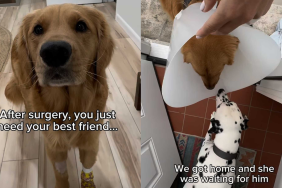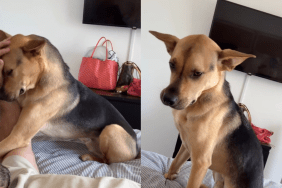Most dog owners will find themselves faced with the agonizing task of asking themselves which is more important–the quality of their dog’s life or the quantity. These situations arise when your dog is facing a terminal illness, or is in the end stages of illnesses such as kidney failure, cancer, or neurological diseases. Sometimes the cost of treatment cannot be justified since it offers no guarantee of cure.
Dog owners have the option of stopping the aggressive, painful treatments and allowing their dogs to live out their lives in the safe, comfortable haven of their own home through hospice care.
Pet hospice care is modeled after the human hospice care program that began in the 1960’s. Hospice is not a particular place, nor is it geared to the cure of disease. Instead, it is a philosophy that offers an alternative to dying in the cold, sterile, impersonal environment of an institution. The guiding principle of hospice is that death is an integral part of life and should be experienced with dignity, allowing your dog to spend his final days in the loving arms of his family.
Hospice Goals
Hospice care is focused on the relief of pain and the emotional well-being of your dog. It seeks to alleviate unnecessary trips to the veterinarian that can cause unneeded stress to an already ill dog by helping the owners provide the maximum amount of care at home. Owners are taught to interpret the signals given by their dogs so they can provide for their dog’s physical and emotional needs. This creates another dimension of closeness between dog and owner, helping to ease the pain of losing your companion.
Dog Owner’s Hospice Duties
While rewarding for dogs and their owners alike, hospice care takes a great deal of preparation and daily work from you, the owner. First you must find a veterinarian who is experienced in hospice work. While many veterinarians practice hospice work, they may not be familiar with the term as applied to dogs. Once you have found a veterinarian familiar with, or willing to learn, hospice care, your real work begins. The veterinarian and his techs will teach you how to administer medications, monitor and record his condition, feed him an appropriate diet, and see to his general well-being. The veterinarian and his staff will set up guidelines to follow and provide ongoing support, by telephone or e-mail, as your dog’s needs change.
One of your most important responsibilities will be administering medication. Working on the theory that it is easier to prevent pain than to relieve it, medication is usually given on a regular schedule, rather than in response to indications of pain. It is your duty to monitor your dog closely, watching for any signs of pain, such as crying or irritability. You can then discuss a new schedule or a new treatment with your veterinarian. You are now the eyes and ears of the veterinarian and have to watch your dog attentively. You need to discuss any changes in your dog’s mobility, eating habits, weight, temperature, or demeanor with your veterinarian. Hospice care is not an exact science. It may take much trial and error before an optimum course of treatment to make your dog comfortable is found.
You may be a little uncomfortable with some of the caretaker tasks you will be asked to perform, such as handling injections, giving intravenous fluids (IV), or collecting urine and feces samples for examination. Your veterinarian and his staff will work with you to put you at ease performing these jobs or they may be able to find alternatives, such as medication that can be administered orally or rectally instead of through an IV or an injection. And as you perform these intimate tasks for your dog, you should find yourself becoming more comfortable with, and even come to enjoy, providing this care for your beloved dog. If there are some tasks that you just cannot do, the veterinarian and his staff are always ready to step in for you.
Euthanasia: When Hospice Care Has Run Its Course
While hospice care is a wonderful alternative to hospital care for critically ill dogs, it is not a substitute for euthanasia. Rather, it provides an intermediate stage between treatment and death, sometimes giving your dog an opportunity to die comfortably at home.
Euthanasia is an agonizing decision to make, but if you have already thoroughly discussed the subject with your veterinarian, it will help you realize when the time is right. This is a personal decision that each person has to make, always keeping the welfare of your dog the highest priority in your mind. Deciding a final point in advance will ease your pain and distress when that final day comes. Euthanasia is a final gift you can give your loyal friend, ending his pain and suffering forever. Many hospice veterinarians will come to your home, allowing you and your dog the comfort of ending his life in a safe, familiar environment.
While hospice care is a great option for terminally ill dogs, it is not for everyone. Some people do not have the time or ability to take on hospice care. You should discuss your lifestyle with your veterinarian to see if hospice care is a viable option for you.
Whatever decision you make, it is indeed a comfort to know that hospice is available. It allows your dog to live out his life in a secure, sheltering place and allows you time to come to terms with the inevitability of death, which, after all, is a natural extension of life. If you have the time and opportunity to make your dog’s death a safe, comfortable experience, you’ve won the game.
Source: Adapted from the American Animal Hospital Association









